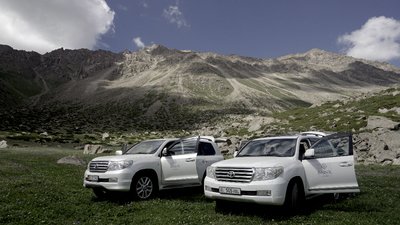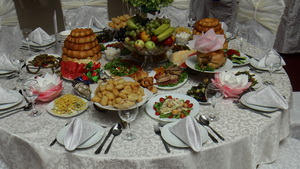The Son-Kol lake
Our tours passing through The Son-Kol lake
Baibol services
The high-altitude Son-kol valley stretches in the central part Of Tien Shan, at an altitude of 3000-3400 m over the sea, surrounded by the snowy tops, stretches the high-altitude Son-kol valley. It occupies a large part of the valley and it is the principal magnet of eco-tourism.
Surrounded by the high mountain ranges of Moldo-Too, Son-Kol, Boor-Albas, the Son-Kol Lake fascinate the travelers by its pristine and inaccessible beauty. It is name, meaning the"following lake" or the “Disappearing Lake”
Such name is rather associated with the altitude of 3016 meters over the sea, in the continental climate zone, where the average annual temperature is - 3,0 °C . The most part of the year, the lake is hidden behind a veil of dense fog, rain and snowstorms, and only during a short time of summer, you will have a chance to see the Son-Kol Lake in all its glory.
The Son-Kol Lake belongs to Naryn River basin and it is one of the greatest high-altitude lakes in the world, and it is the biggest natural reservoirs of Kyrgyzstan. Like Issyk-Kol and Chatyr-Kol lakes, the Son-Lake also has a tectonic origin; it means that the lake arose in the cavity, formed as a result of crustal movements that have affected its size and depth. Lake`s maximum length is 29 km breadth about 18 km, and extreme depth of 13.2 m, and has an area of about 270 km.
The Son-Kol Lake consists of 18 mountain lakes, the biggest ones are Ak-Tash, Djaman-Echki, Ozbek, Karakeche, Kurtka, Tash-Dobo, Kum-Bel and Kumdu-Suu, and there is only one river flows out the lake that is why this Son-Kol relates to waste lakes. Many mountain streams and small streams flow into the lake, bringing the volume of water of 2.64 km3 The lake itself is surrounded by the everglade with the small lakes. Due to the high mountain ranges block the ocean cyclones; there is a little number of precipitations, about 350-400 mm per year. However, winter comes in October and lasts until mid-April. The average January temperature is 20 °C , but can drop to -40 °C .
About 160 cold days the Son-Kol lake turns into inaccessible place for tourism, because of large amount of snow. The lake freezes and covers with the ice in November, and the water temperature drops to - 3 °C . Only in the late spring, in may the lake starts melting. After what comes short summer. The average temperature in July 12 °C, the mean temperature in the lake basin is 11-12 °C in July.
The geographical position and climate of Son-Kol make it a real Kingdom of nature. During the seasonal migration there you can find about one hundred species of birds, 16 types of ducks, some types of gulls and terns, cranes, about thirty species of waders, the most popular is
Among the rare birds occupying on the bank of the Son-Kol Lake, you can see such kind of birds as demoiselle crane, whooper swan, and the main bird of the local nature the bar-headed goose. The bar-headed goose is listed in the International Red Book, and it is easy to compare them with the rest waterfowls, you can distinguish them by smoke-colored with the prominent black stripes on the backside. In the end of the April a flock of bar-headed gooses fly from India. After the melting, the gooses start building their nests and preparing for eggs –laying, and in July you can see the new generation of bar-headed gooses walking along the marched coast. The east part of Son-Kol Lake is a part of the Karatal-Gypar State reserve, established in 1994, to protect rare and endangered animals such as the Tien Shan bear, snow leopard, the Turkestan lynx, and a vulture named kuumai, a whole, a red wolf or the Kyrgyz Choo.
Originally the lake was fishless, and only in the second half of the last century it was artificially stocked with the rare breeds of cold-water fish, adapted to life in mountain waters. At the present time the lake serves as a place of sport fishing, the more experienced fishers can catch such fishes as diptychus, сoregonus, peled, a broad whitefish and the Tibetean loach. During the summer time there are many types of rare flowers such as alpine meadow and steppe plants, among which you can find the edelweiss flower listed in the Red book Edelweiss.
Because of harsh weather conditions there is no any human settlement, anymore the lake is surrounded by the mountain meadows, anciently this place has been served as a summer pasture for nomads.
Even now, you can still find traces of ancient nomadic culture; they are the rock carvings, grave-mounds, and Kurgan stelaes- balbans. The most known ancient monument of Son-Kol- is made of eight stone blocks, a huge ritual hearth Tash-Tulga.
The shores of the Son-kol lake is still full of charm of wild nature, and these places are so popular among the tourists and travelers. There they can stay in the yurt camp (the resting place for tourists, designed under the traditional dwelling of nomads with all the conveniences) have the ethnic cuisine, and the most important to know more about the history, culture and living conditions of nomads.











